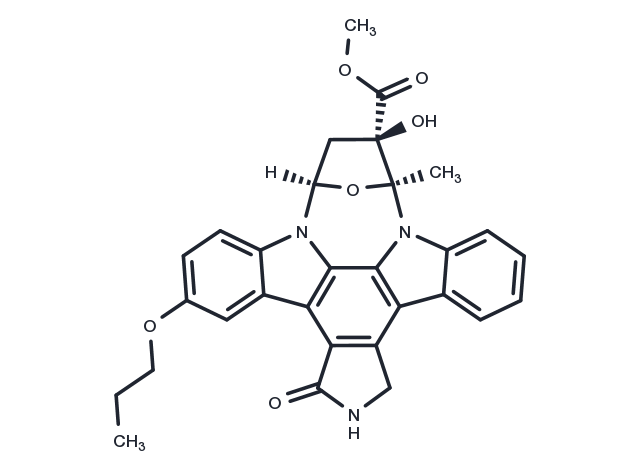Powder: -20°C for 3 years | In solvent: -80°C for 1 year


KT5926 is an effective and selective inhibitor of myosin light chain kinase. KT5926 is an analogue of K-252a, which blocks all responses to NGF. KT5926 selectively inhibits nerve growth factor-dependent neurite elongation.

| Pack Size | Availability | Price/USD | Quantity |
|---|---|---|---|
| 25 mg | 10-14 weeks | $ 3,320.00 | |
| 50 mg | 10-14 weeks | $ 4,380.00 | |
| 100 mg | 10-14 weeks | $ 6,100.00 |
| Description | KT5926 is an effective and selective inhibitor of myosin light chain kinase. KT5926 is an analogue of K-252a, which blocks all responses to NGF. KT5926 selectively inhibits nerve growth factor-dependent neurite elongation. |
| Synonyms | KT 5926, KT-5926 |
| Molecular Weight | 525.55 |
| Formula | C30H27N3O6 |
| CAS No. | 126643-38-7 |
Powder: -20°C for 3 years | In solvent: -80°C for 1 year
You can also refer to dose conversion for different animals. More
bottom
Please see Inhibitor Handling Instructions for more frequently ask questions. Topics include: how to prepare stock solutions, how to store products, and cautions on cell-based assays & animal experiments, etc.
KT5926 126643-38-7 KT 5926 KT-5926 inhibitor inhibit
